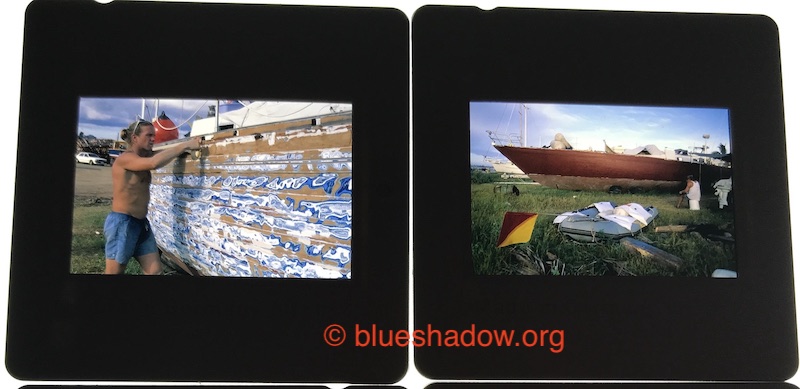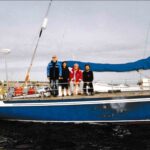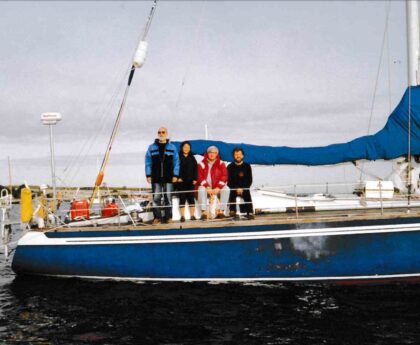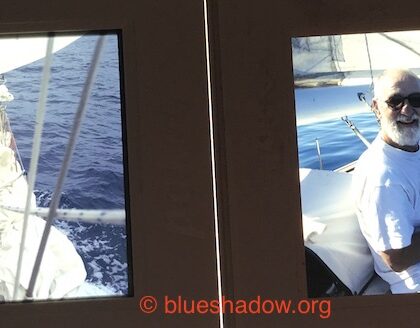By Jennifer Griffiths
Weathering cyclone season aground
Blue Shadow survived the 1996-1997 South Pacific cyclone season in a novel way – by going into hibernation in the heart of hurricane territory. Instead of leaving for distant shores, she took shelter in a hole in the ground at boatyard just north of Lautoka, on the Fijian mainland.
A hole was dug for her keel and filled with salt water, then she was snugly laid to rest along with all the other vessels in the boat “graveyard”.
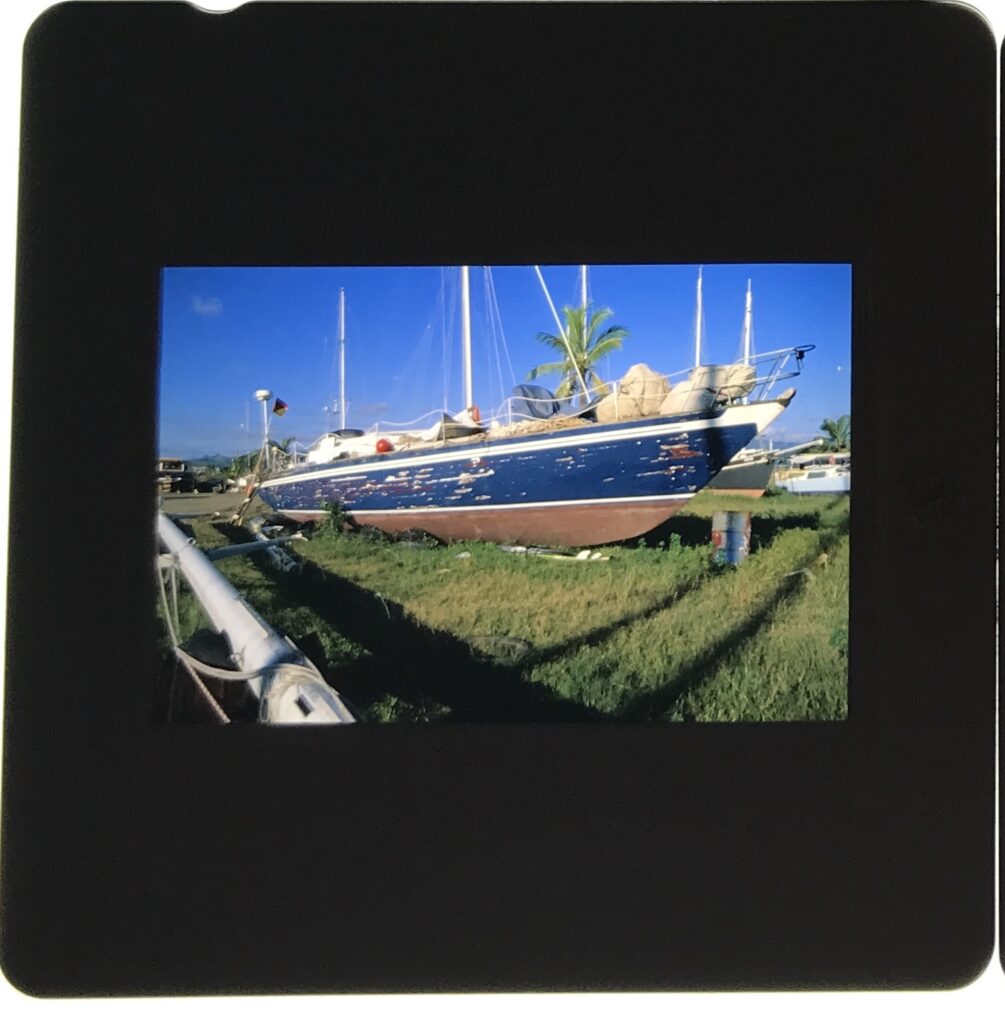
Everything that could get damaged or stolen was stored inside her hull including winches, spinnaker pole and other fittings. Her mast was stored flat on the ground alongside her. The theory being that most hurricane damage was caused by flying objects such as corrugated roofs. Therefore, the lower anything was to ground level the safer it would be from potential damage.
It was a fine idea in theory but still Blue Shadow took quite a hammering and a lot of work was required to put her back together again.
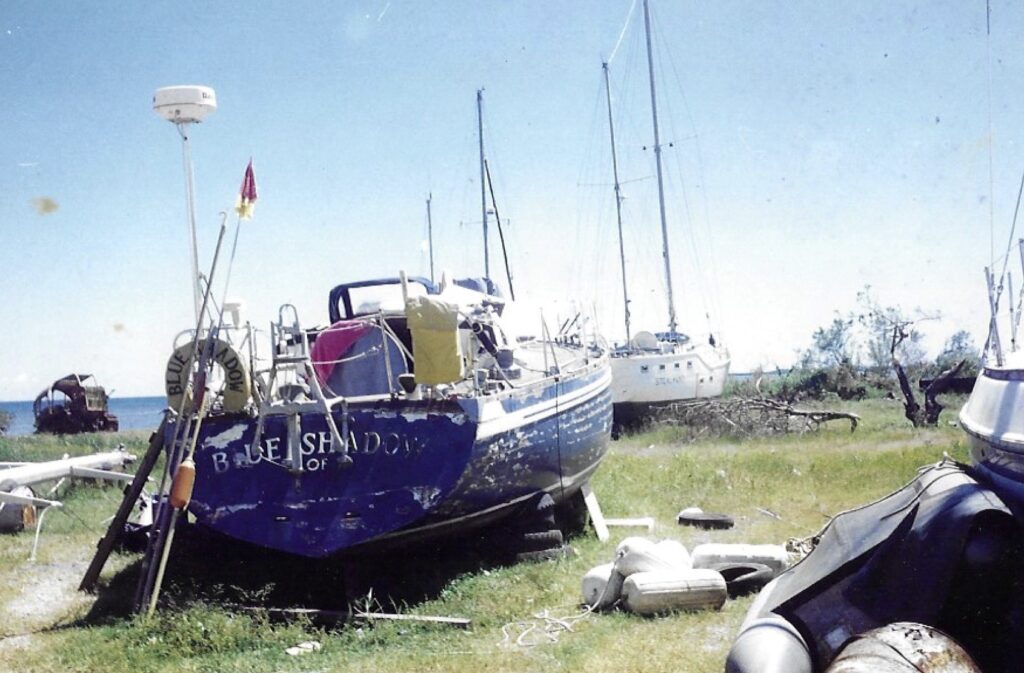
Before and after shots, and lots of elbow greace in between, March and April 1997.
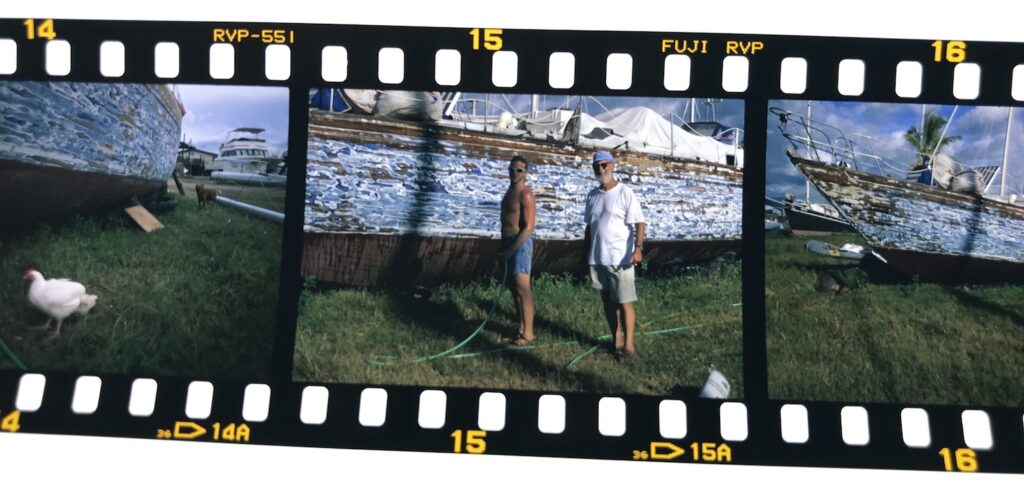
Andreas and Christian preparing Blue Shadow for second season in the Pacific. We decided to paint her white with blue trimming to keep her cooler while in the tropics.
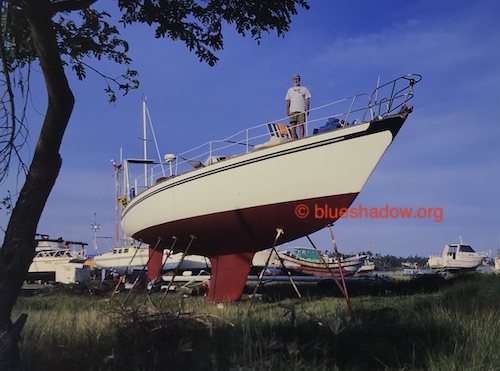
There was a wonderful camaraderie in the boatyard as everyone arrived back at more or less the same time to restore their boats. We met old and new friends from all around the world. The race was on between us all to see who could get into the water first, or at least back into the ocean before the very threadbare tyres of boatyard’s travel lift gave in.
Located on a mudflat in the industrial part of town, muddy and thick with mosquitoes and downwind from sugarcane burning, it was possibly the most unromantic place in the world, however this is where I met the love of my life, Peter, who had sailed single-handedly from Galapagos through French Polynesia to Fiji. He had stored his steel boat, Paros, here for two years and returned with two friends to repair Paros for another season in the Pacific. Christian, Andreas and I arrived on the same day to prepare Blue Shadow for the next leg of her voyage.
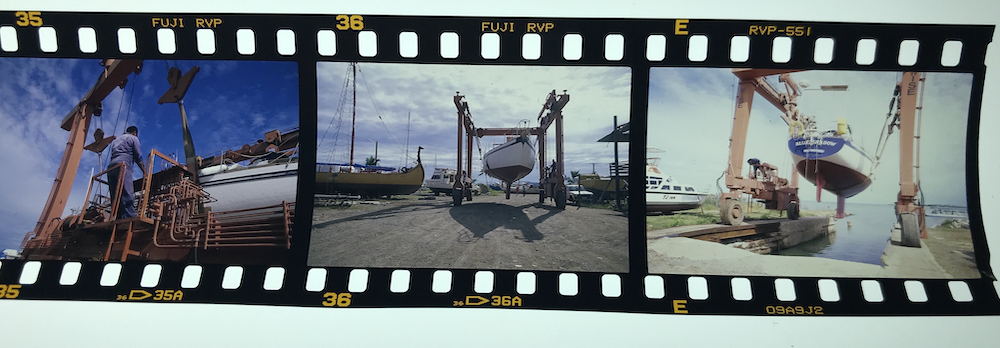
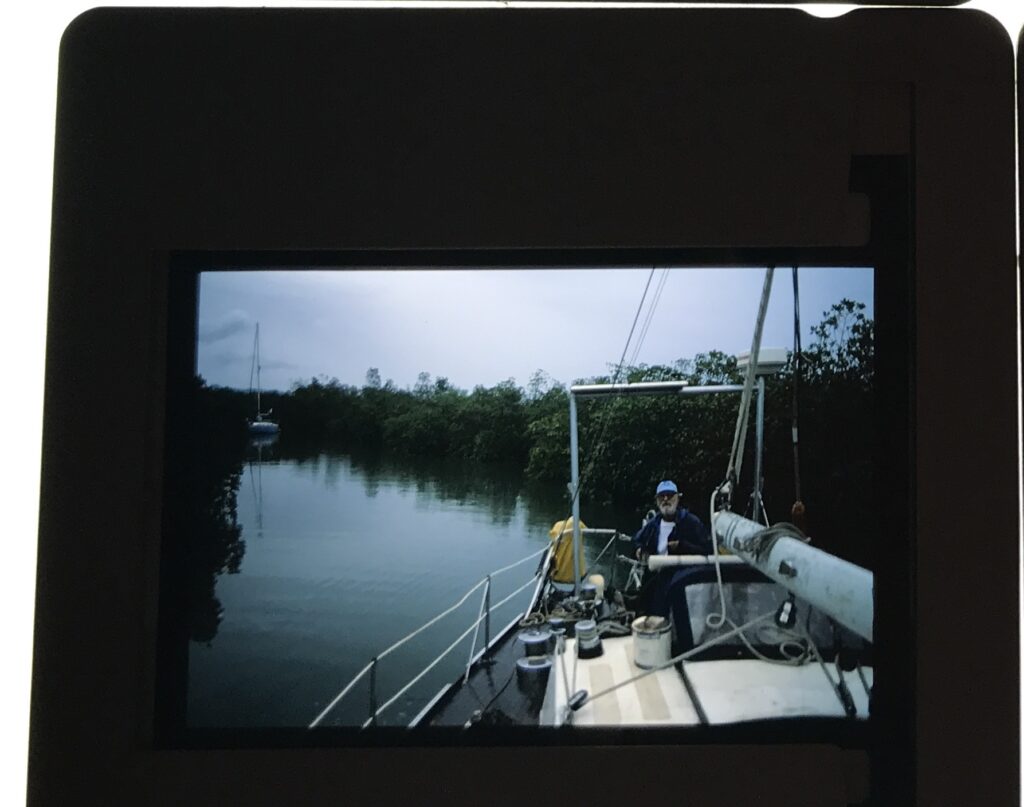
No sooner were we back in the water when there was cyclone alert. Christian, Andreas and I sailed north and found shelter in a mangrove swamp up a river a few miles north of Lautoka along with many other vessels in the region, including cargo boats and a small naval vessel. Further up the river, the depths were quite shallow for Blue Shadow but we wanted to be secure and away from flying objects. Our conclusion afterwards: heading for the mangrove swamps north of Lautoka seems to be a far better alternative to weathering a storm holed up in a boatyard. It took us a month to repair her and Christian swore never again to abandon his boat for long periods of time.
The boat “graveyard” in Lautoka no longer exists but this concept of cyclone storage still lives on in Fiji, now at Vuda marina further south on the mainland. It would be interesting to see some genuine “before and after” after cyclone season photographs as boats there all appear to be stored with masts intact.
